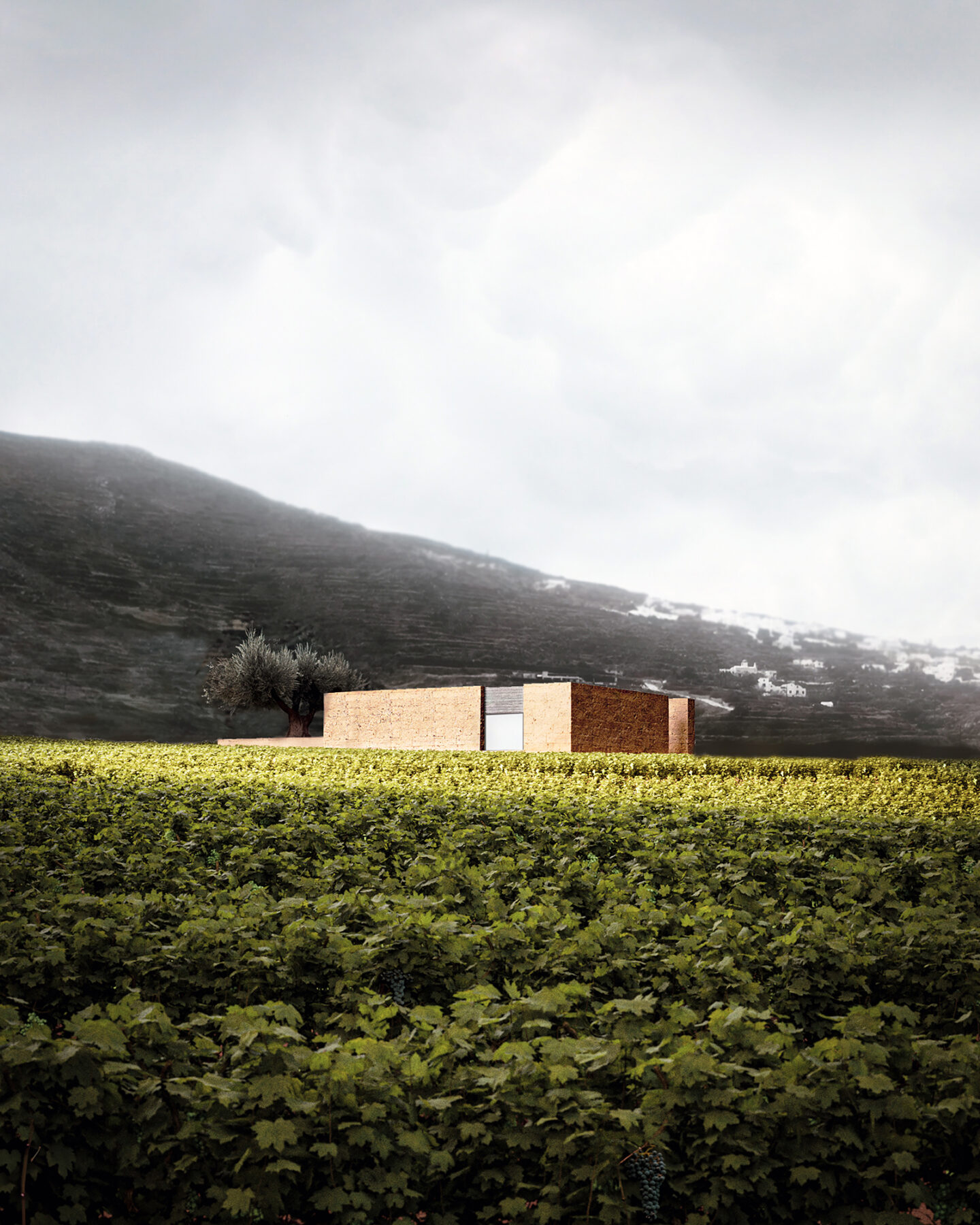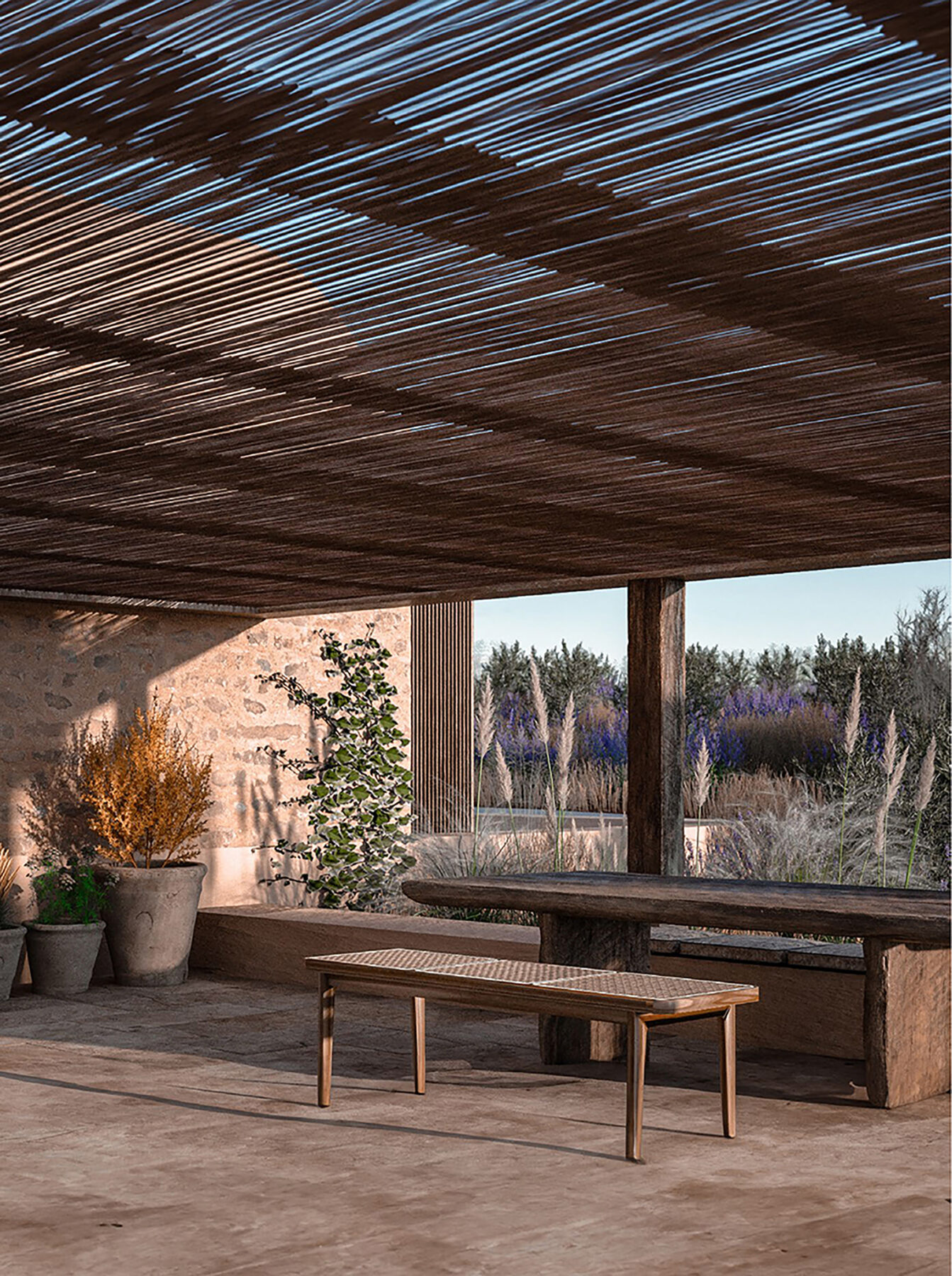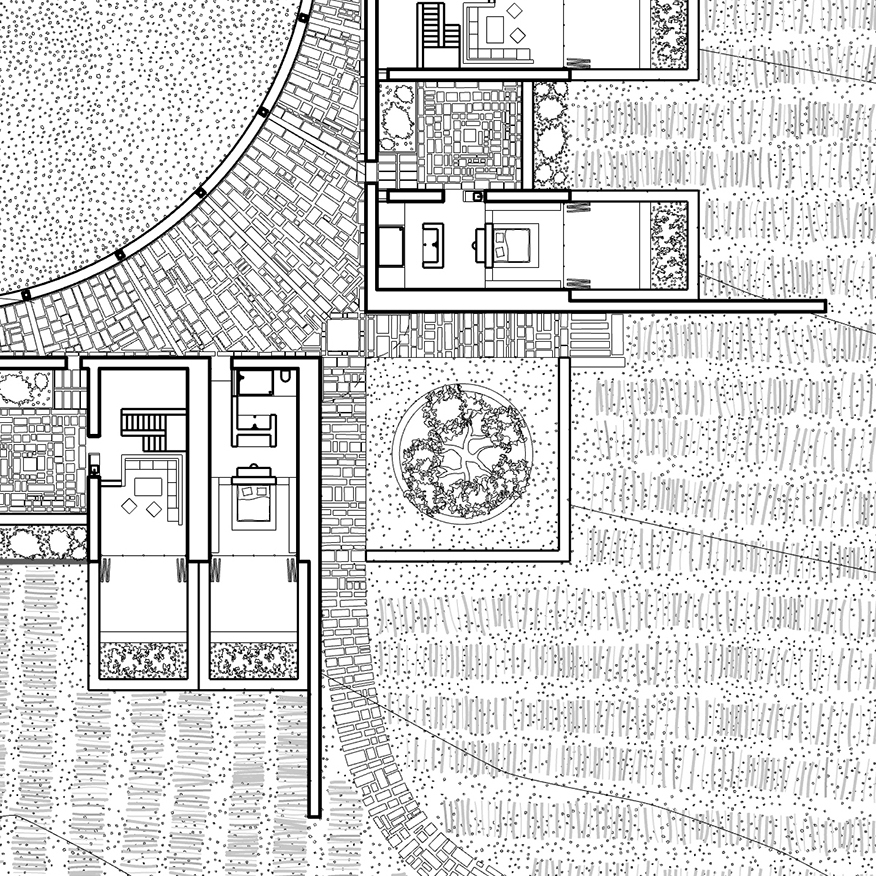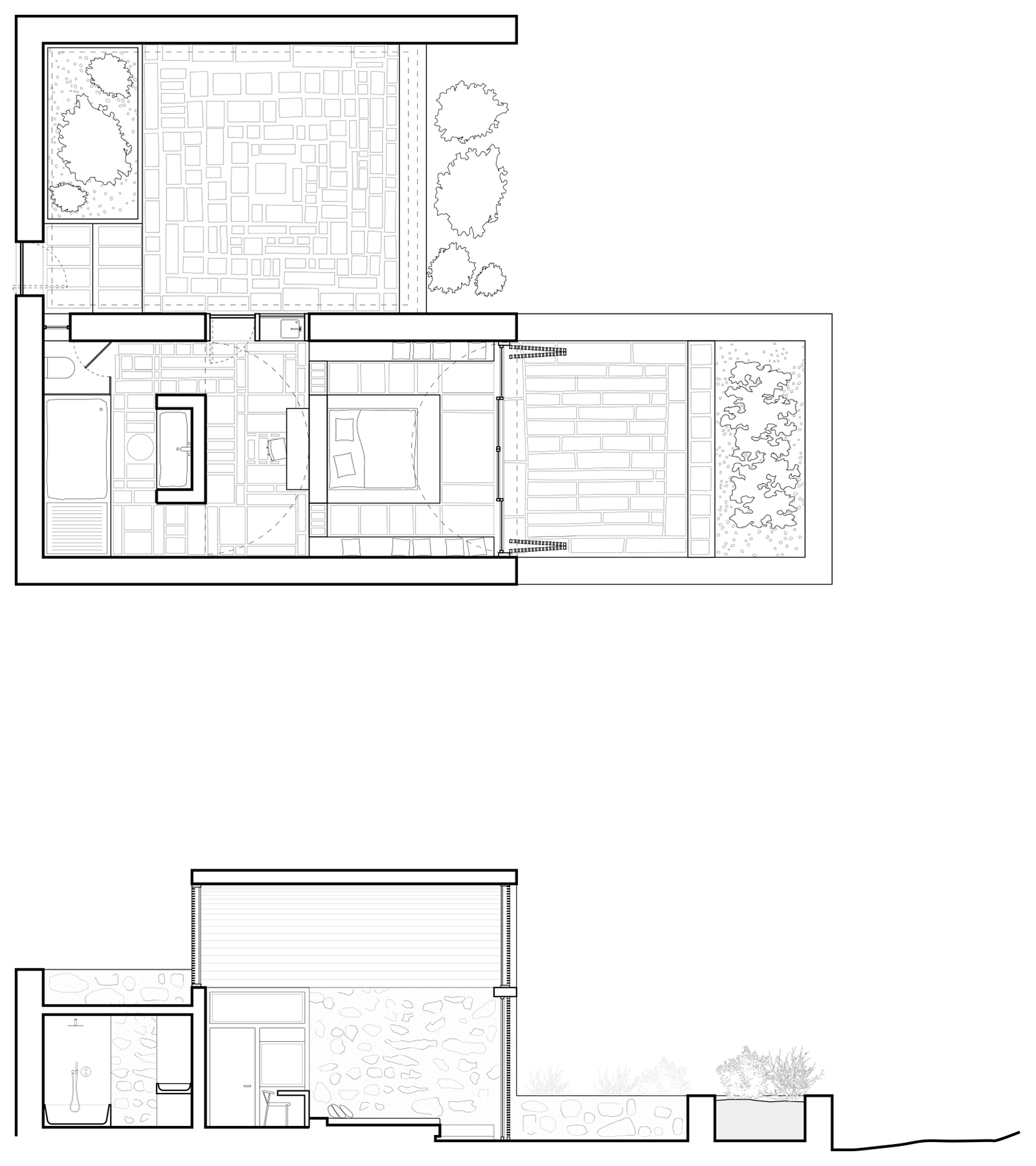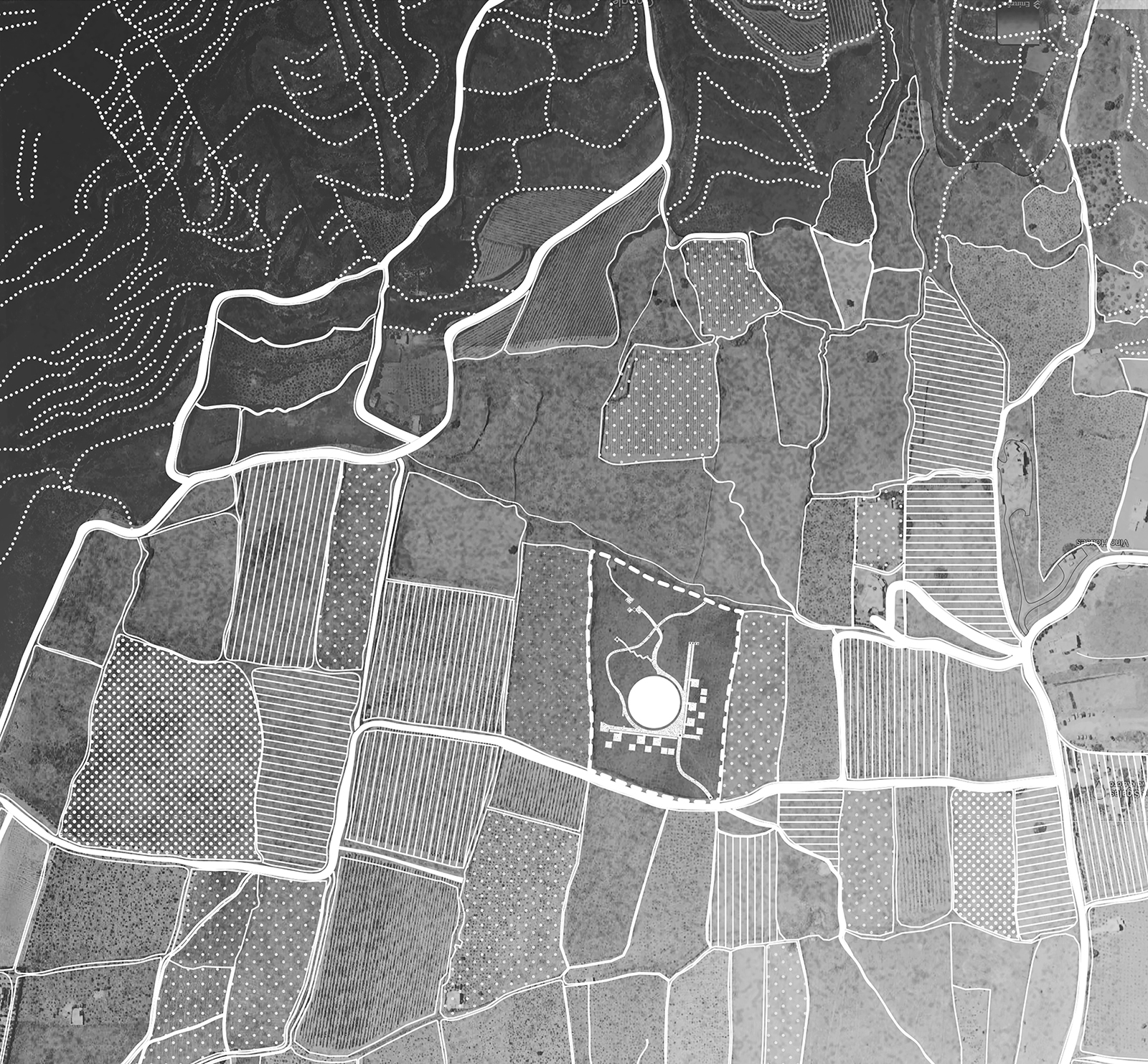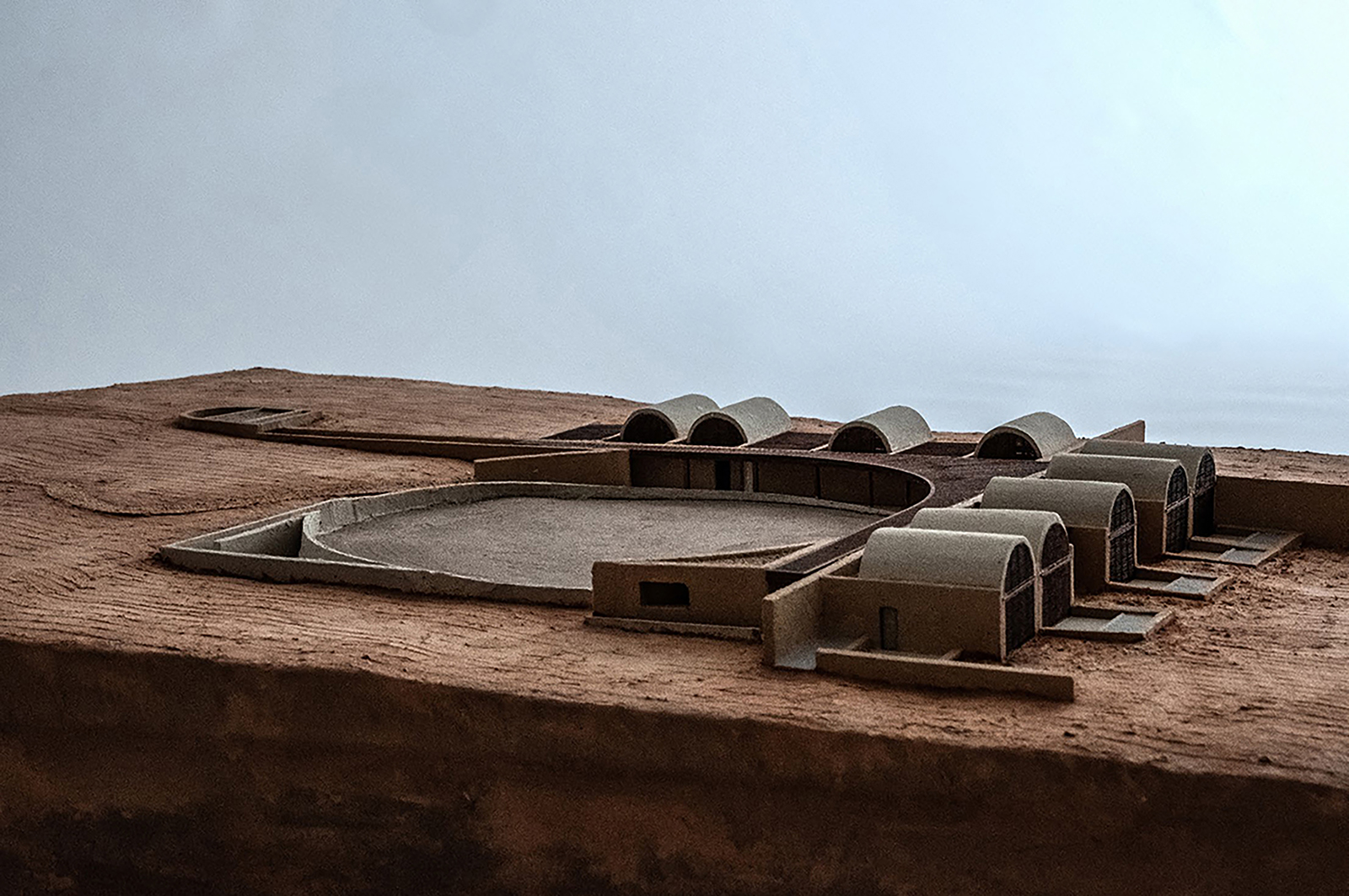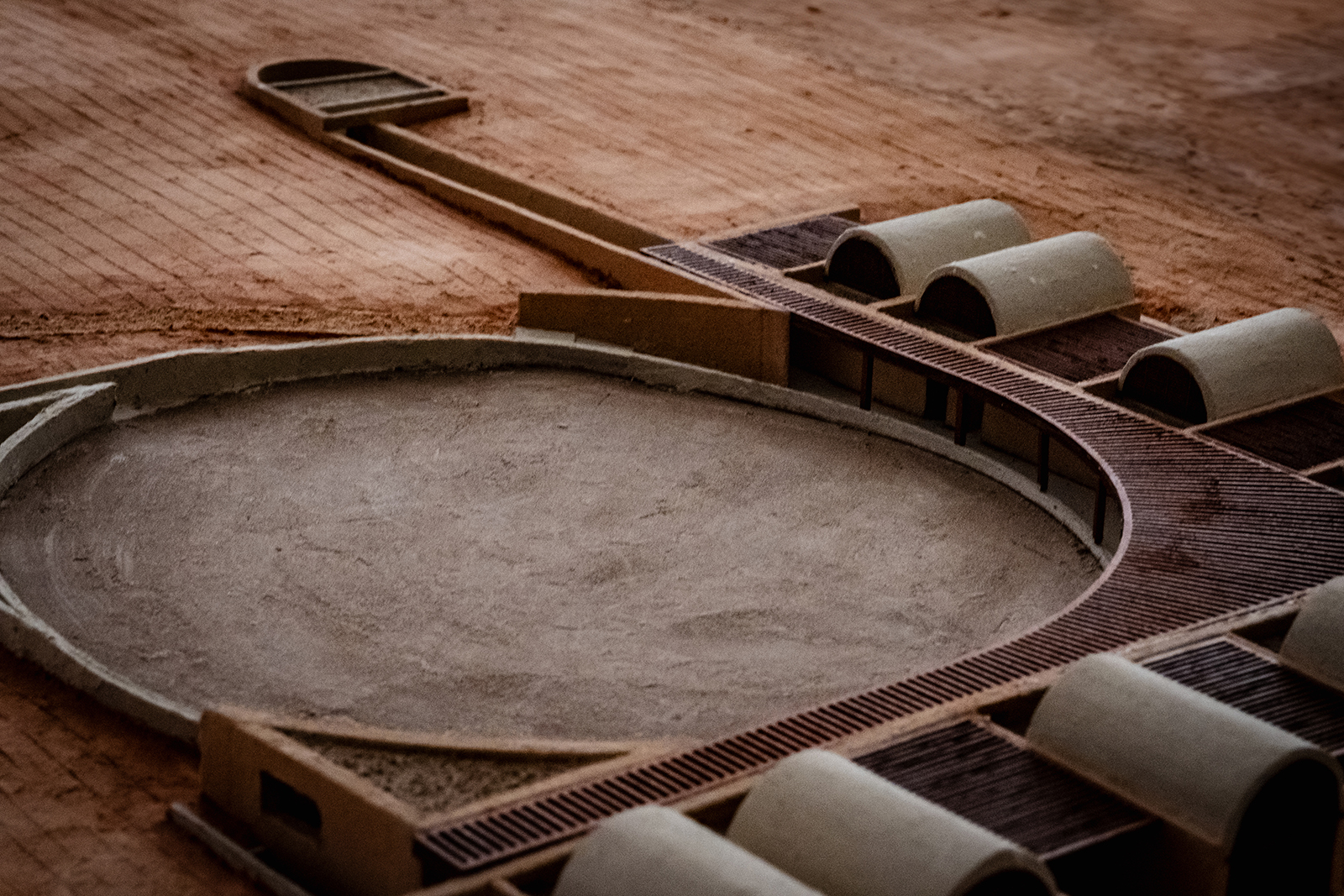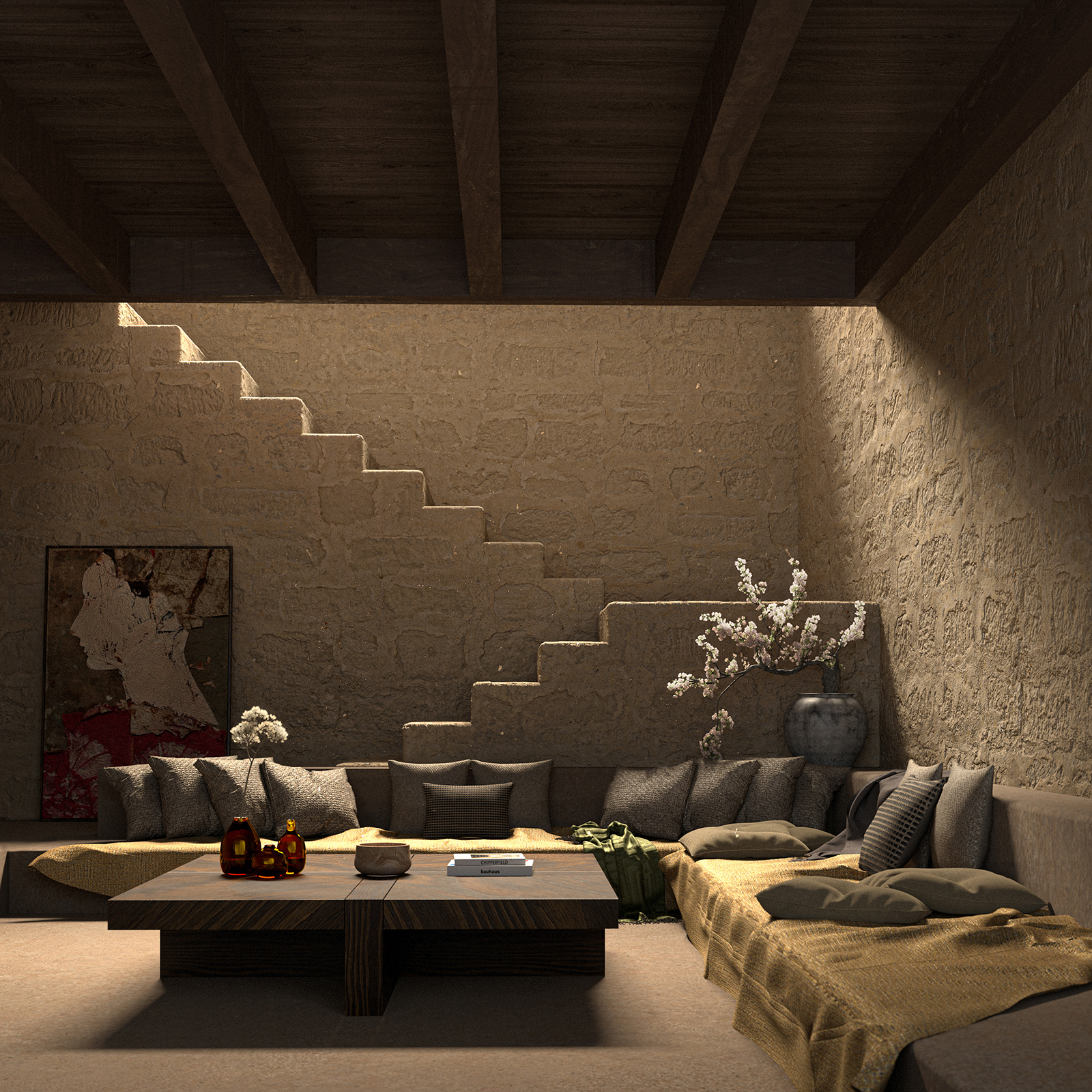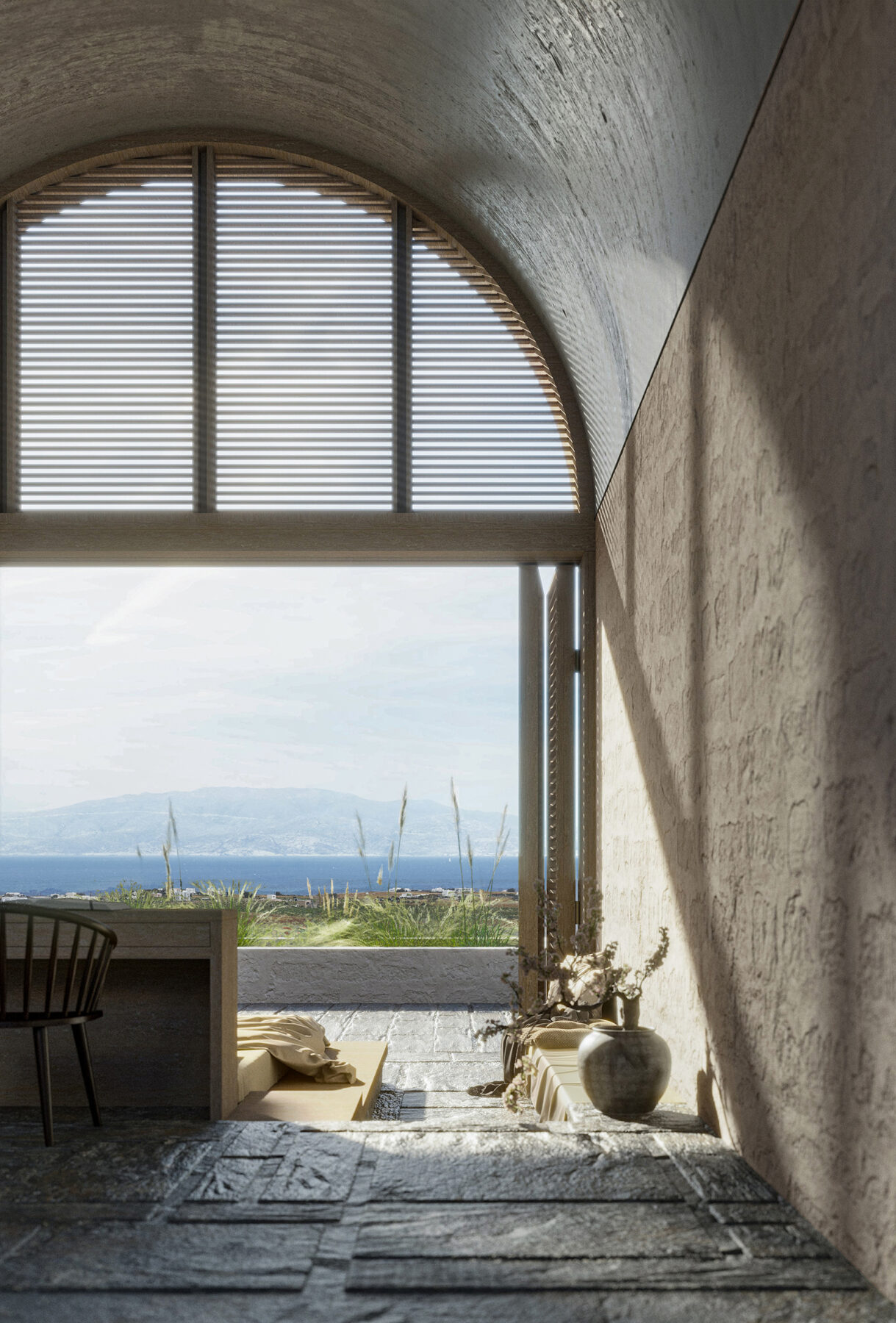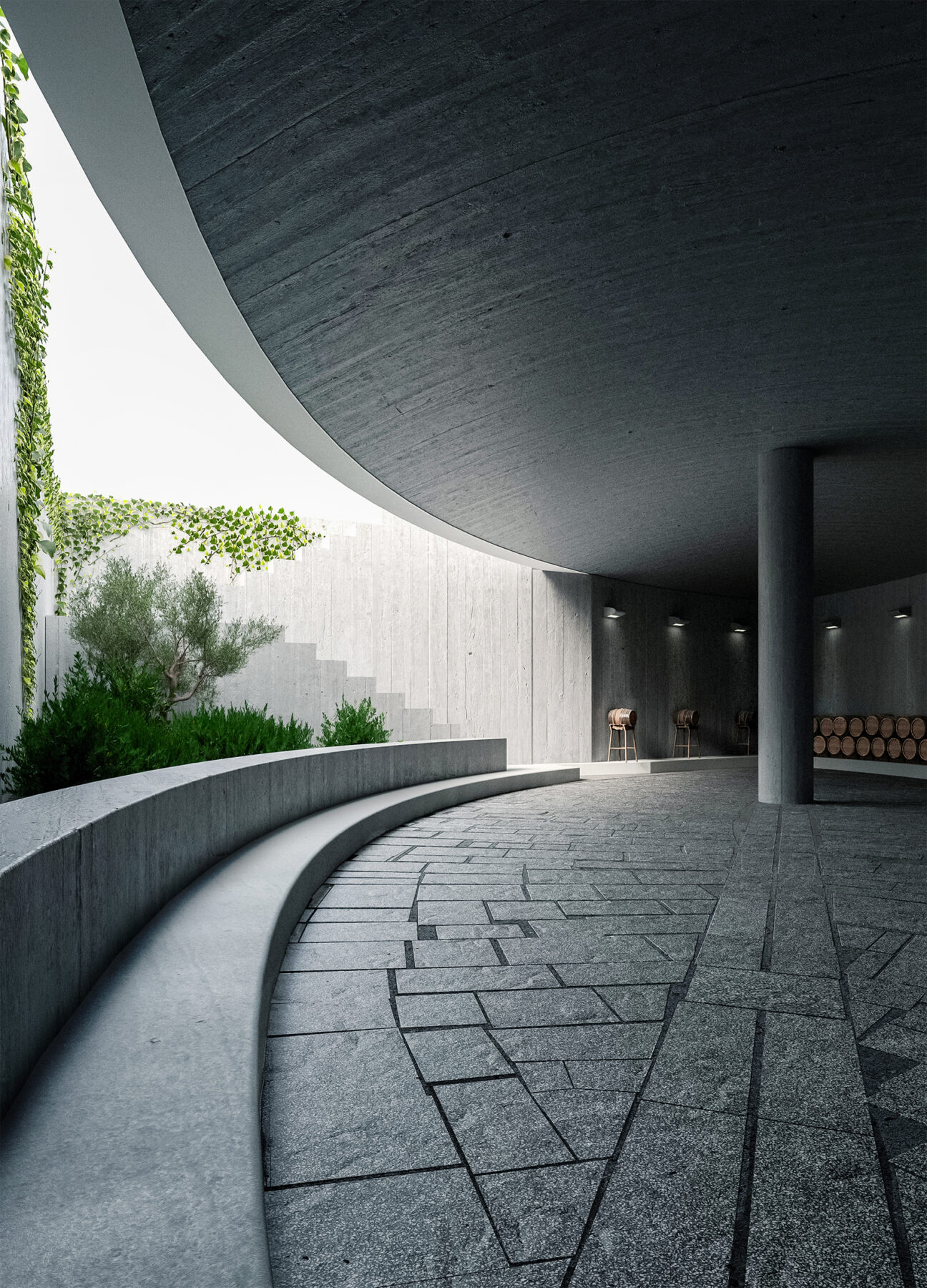Το έργο του γραφείου Nysa Architects, τοποθετείται σε έναν εγκαταλειμμένο αμπελώνα στην βορινή πεδιάδα του νησιού. Η «περιθωριακή» θέση του ξενοδοχείου επέτρεψε στους αρχιτεκτονες να φέρουν στην επιφάνεια άγνωστες πλευρές του νησιού, πιο απτικές και λιγότερο οπτικές, αποκαθιστώντας τον αμπελώνα και εισάγοντας την αμπελουργική μυσταγωγία στην εμπειρία του ξενοδοχείου.
Η Σαντορίνη είναι ένας τόπος βίαιης γεωλογικής ιστορίας. Καθώς είναι ακόμα ενεργό ηφαίστειο, βρίσκεται μόνιμα σε διαδικασία διαμόρφωσης. Η μοναδικότητα της ιστορίας του νησιού μπορεί να ανιχνευθεί στην γεωλογική στρωματογραφία του. Κοκκινόπετρες, μαυρόπετρες και κίσσηρη σχηματίζουν ένα απαράμιλλο τοπίο. Η μοναδικότητα του επίσης εκφράζεται στο σχήμα του. Είναι ένα κυκλικό νησί με ένα έκκεντρο κενό στο εσωτερικό του, ως αποτέλεσμα πλήθους καταστροφικών ηφαιστειακών εκρήξεων.
Στην εμβληματική εικόνα αυτού του τοπίου οφείλει την μεγάλη τουριστική του αξία, με τους γραφικούς οικισμούς σκαρφαλωμένους στις ηφαιστειακές πλαγιές, αλλά σε αυτή την εικόνα είναι επίσης παγιδευμένο.
Το έργο του γραφείου Nysa Architects, τοποθετείται σε έναν εγκαταλειμμένο αμπελώνα στην βορινή πεδιάδα του νησιού. Η «περιθωριακή» θέση του ξενοδοχείου επέτρεψε στους αριτεκτονες να φέρουν στην επιφάνεια άγνωστες πλευρές του νησιού, πιο απτικές και λιγότερο οπτικές, αποκαθιστώντας τον αμπελώνα και εισάγοντας την αμπελουργική μυσταγωγία στην εμπειρία του ξενοδοχείου.
Κόντρα στην ισχύουσα τάση που επιτάσσει τα ξενοδοχεία να στρέφονται προς μια πανοραμική θέα στη θάλασσα, το συγκρότημα στρέφεται προς στον ηφαιστειακό κώνο, δημιουργώντας ένα ανοικτό κάδρο που ολοκληρώνεται από το ηφαίστειο. Το ξενοδοχείο οργανώνεται σαν ένα μικρό μοναστήρι, με εννιά κατοικίες τοποθετημένες κατά μήκος δύο αξόνων που καλύπτονται με ξύλινη πέργκολα. Αντιδιαμετρικά της εισόδου, σε μια τριγωνικά απόληξη του κύκλου τοποθετείται το υπόγειο κελάρι όπου γίνεται η αποθήκευση και η δοκιμή του οίνου. Το δωμάτιο-κελί αποτελεί την υλοποιημένη δήλωση της απομόνωσης.
Το κάθε δωμάτιο, ελαφρώς βυθισμένο στο έδαφος αποσυνδέει την οριζόντια εμπειρία θέασης που συνήθως συσχετίζεται με τον τουρισμό.
Ο παραθεριστής πλέον δεν είναι επισκέπτης-θεατής σε ένα εξωτικό αξιοθέατο αλλά ένας κάτοικος που απολαμβάνει τις καθημερινές δραστηριότητες της ενατένισης, του περιπάτου, του φαγητού και του ύπνου όπως αυτές πλαισιώνονται από τη Θηραϊκή γη.
Στοιχεία έργου
Τίτλος έργου: Terra Dionysia, Wine Hotel
Τοποθεσία έργου: Φοινικιά, Σαντορίνη
Αρχιτεκτονική: Nysa Architects
Ομάδα Μελέτης: Αλέξανδρος Σπεντζάρης, Γιώργος Χατζόπουλος, Ανδρέας Βαλάσης, Γιώργος Αυγερινού, Εριέττα Καζάκου (Σπουδάστρια Αρχιτεκτονικής)
Επιφάνεια οικοπέδου: 16.000m²
Κτισμένη επιφάνεια: 400m²
Χρόνος μελέτης: 2021-2023
Kείμενο: Από τους αρχιτεκτονες
Nysa Architects’ project is placed in an old abandoned vineyard on the outer perimeter of the island. This marginal location allowed the architects to bring to the surface less visual and more tactile qualities of Santorini. They restored the vineyard and we infuse the viticultural mystique in the hospitality. The hotel is organized as a small monastery, with residences on the two sides and a communal space at the center.
Santorini is a place of turbulent geological history. Being still an active volcano, it is always in a process of transformation. The uniqueness of its story can be found in the geological strata. Red, black, and white rocks form an unprecedented landscape. Its uniqueness is also expressed in its shape. It is a circular island with an off-center void; a result of various destructive volcanic eruptions. The iconicity of the island and its main tourist value is derived from this landscape, with its many picturesque villages spread on the volcanic cliffs and the sublime views. Today, the tourist industry has reduced Santorini to this iconic image, obliterating its many other facets.
Santorini is also famous for its ancient vineyards, producing some of the most exquisite wines in Greece. The shape of the vines is a local peculiarity too. Local farmers give a circular form to the plants for hundreds of years. The office’s project is placed in an old abandoned vineyard on the outer perimeter of the island. This marginal location allowed the architects to bring to the surface less visual and more tactile qualities of Santorini. They restored the vineyard and we infuse the viticultural mystique in the hospitality.
The hotel is organized as a small monastery, with residences on the two sides and a communal space at the center.
Contrary to the common trend that dictates that hotels look at a panoramic sea view, we turn our hotel towards the volcanic mountain. A circular void covered with red volcanic stones is placed at the center of the composition. It dominates the communal experience and it contextualizes the project. It is a place for gatherings, events, and banquets. The entrance frames the volcanic cone with the red circle in the foreground.
Opposite the entrance, the circle has a triangular apex that leads to an underground cave-like wine cellar. Nine residences are placed along two axes which are covered with an extended pergola.
One axis ends up in a subterranean bath, while the other branches to smaller landscape pathways. Each residence has its own smaller courtyard, forming a more intimate landscape.
The project aspires to immerse the inhabitants in the many aspects of the Thiraic ground. Geological transformation, agricultural activities, earth traces of material cultures and ways of living are all becoming part of the hotel experience.
Plans
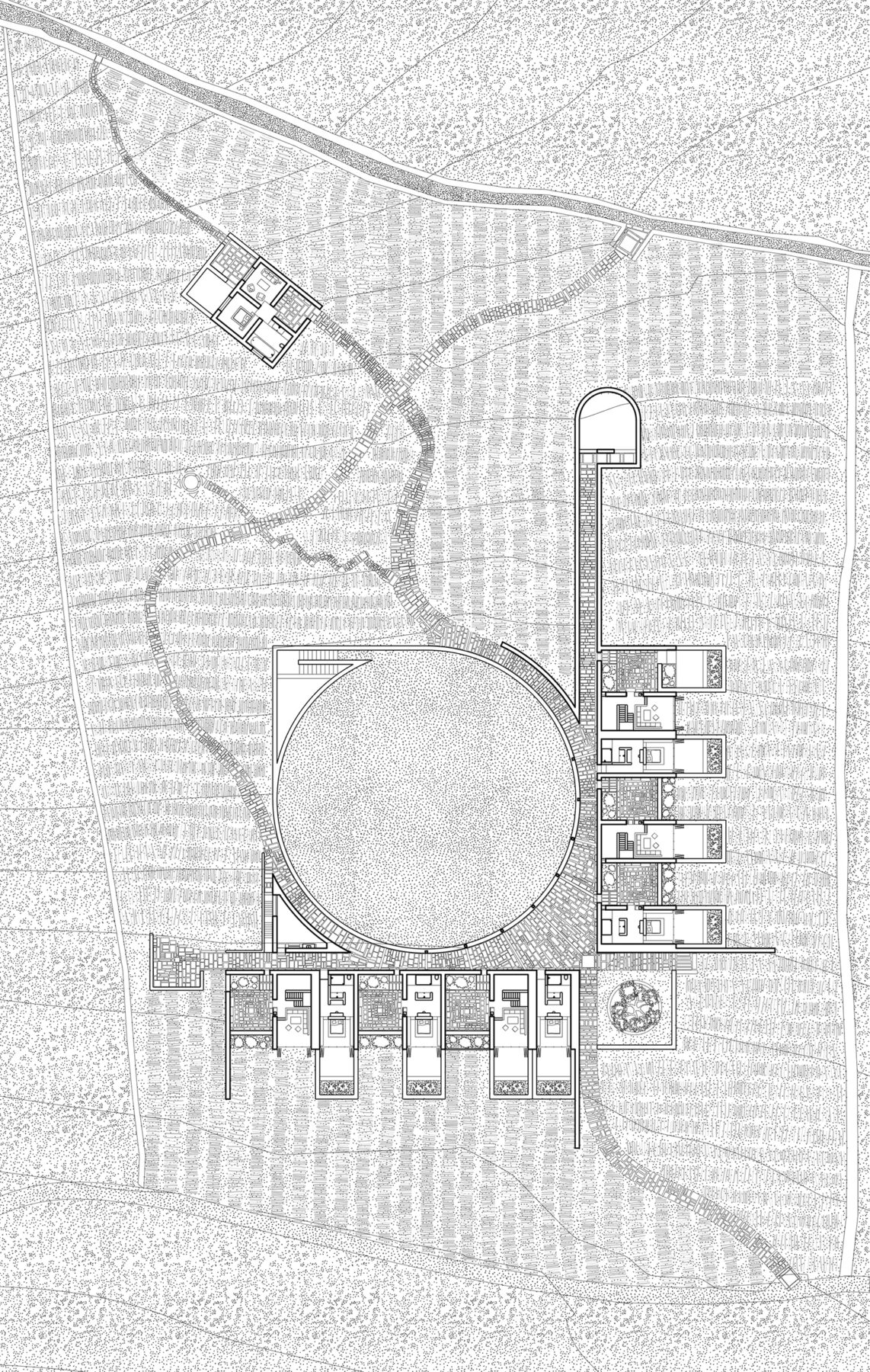
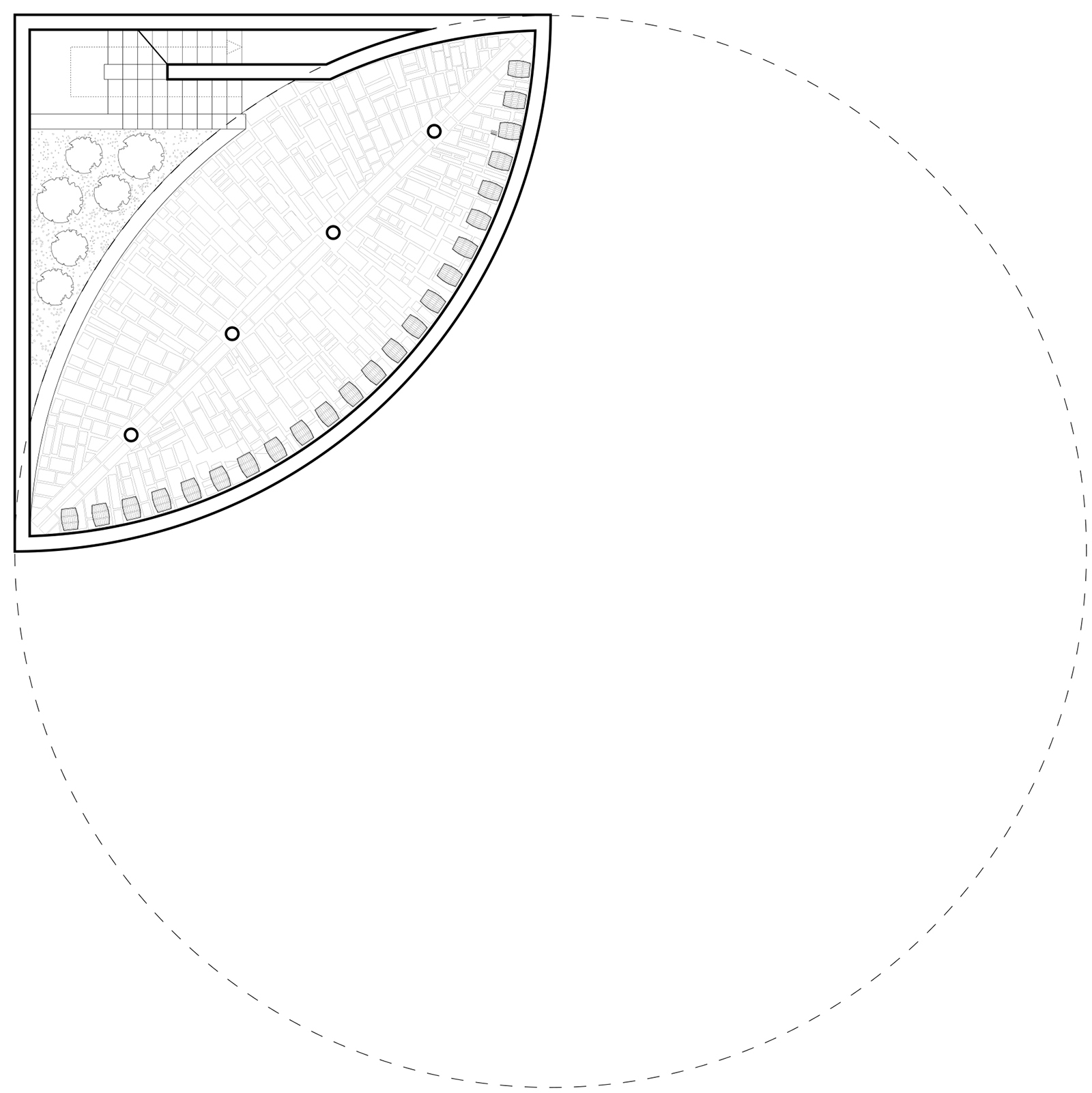
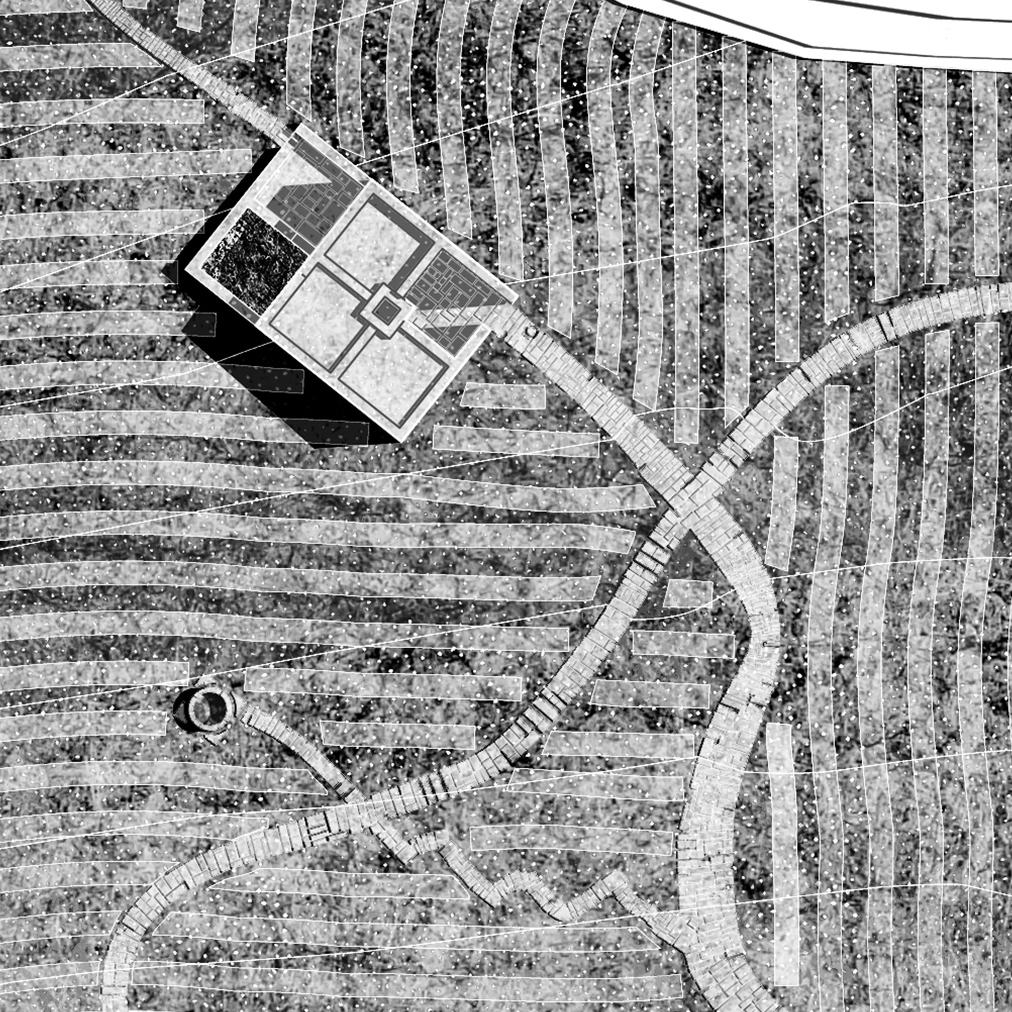
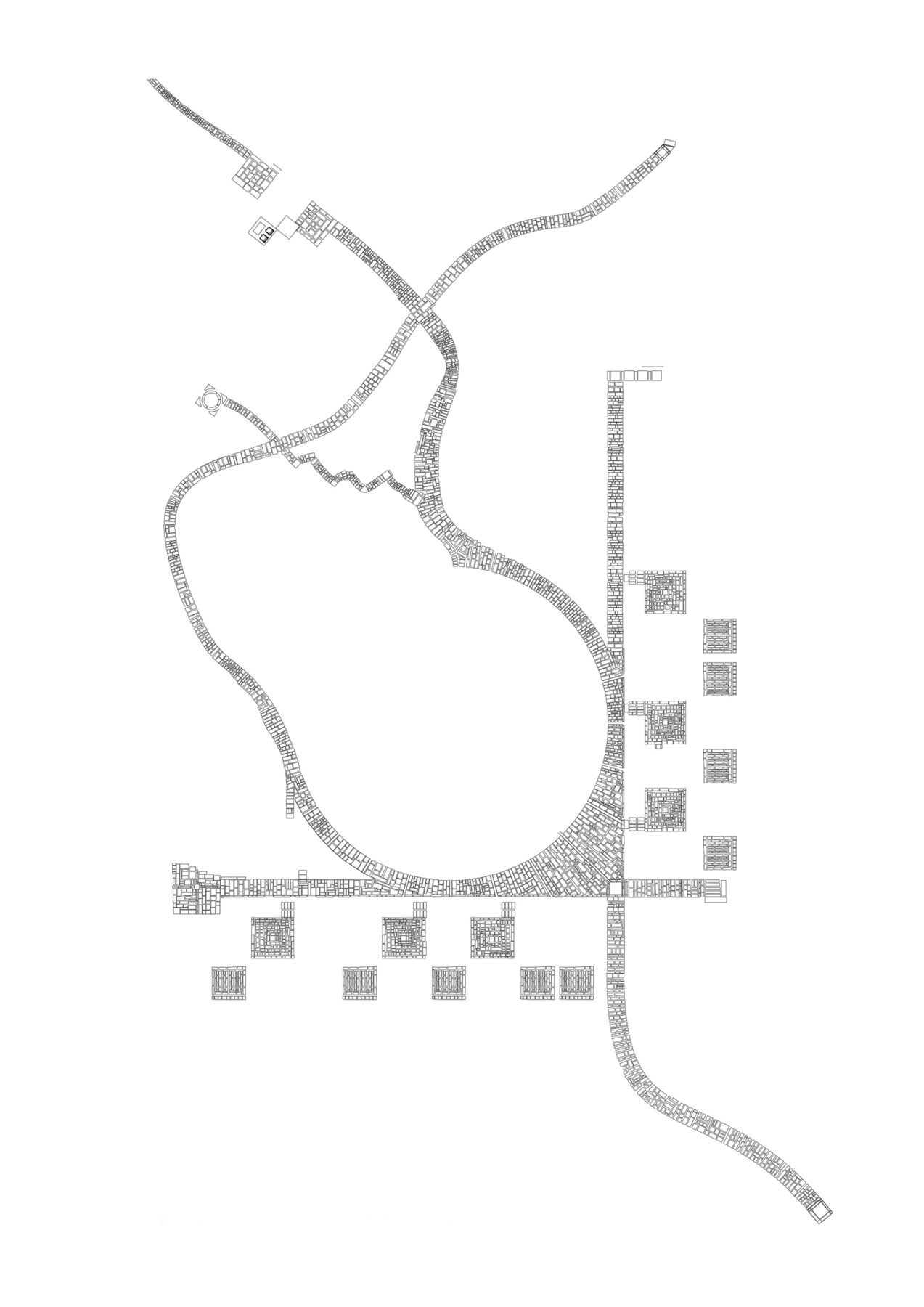
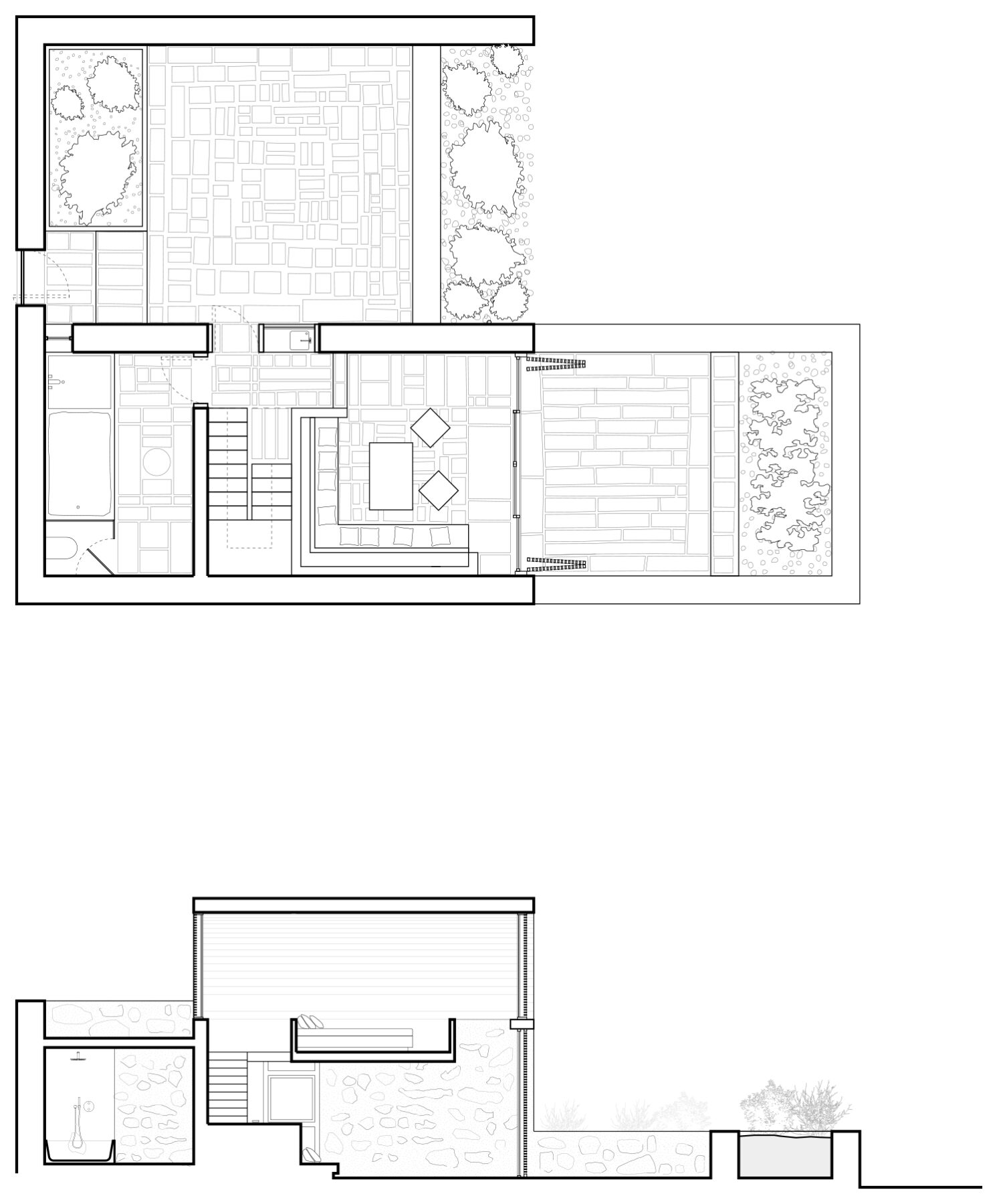
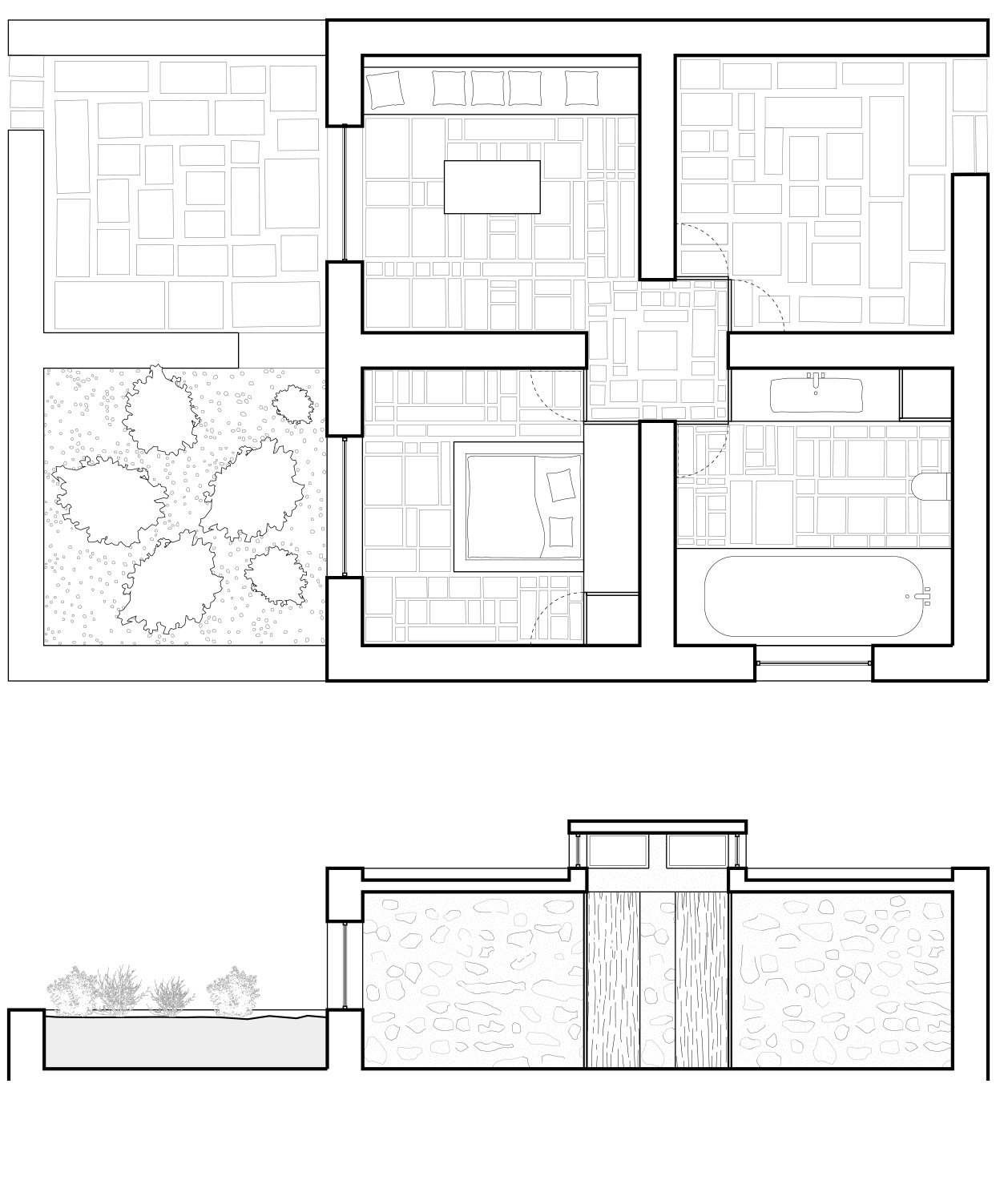
Facts & Credits
Project title: Terra Dionysia, Wine Hotel
Project location: Foinikia, Santorini, Greece
Architecture: Nysa Architects
Architecture team: Alexandros Spentzaros, Giorgos Hatzopoulos, Andreas Valasis, Giorgos Avgerinou, Erieta Kazakou
Site area: 16.000m²
Built area: 400m²
Date of study: 2021-2023
Τext: Provided by the authors
READ ALSO: Double Skin - Triplex at Phychiko | by Micromega Architecture & Strategies
